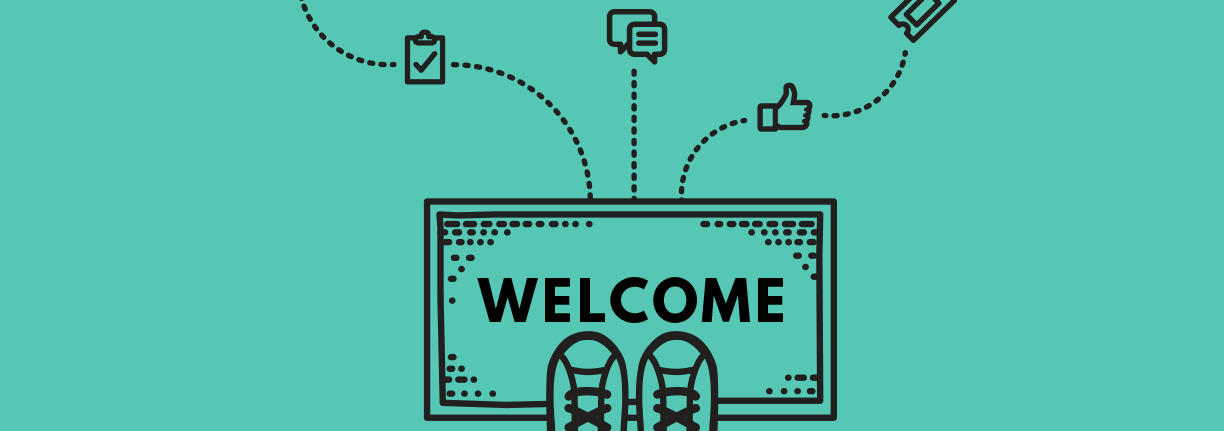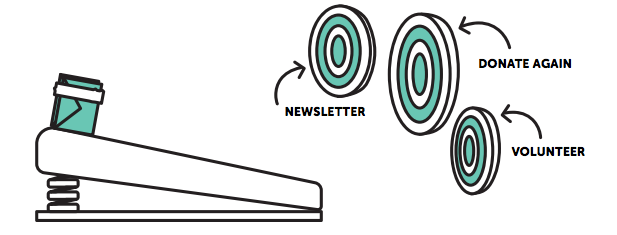How to Leverage Welcome Emails to Retain New Donors

You’ve worked hard to get a prospect to finally donate, but now comes the real challenge: getting them to stay. While organizations focus intently on the acquisition process, they still struggle to retain donors after the fact. Only 27 percent of first time donors stay with an organization.
Solidify and strengthen your relationships with new donors with a 3- to 4-part welcome email series. Through these introductory messages, you can properly onboard new supporters, and help them get to know and understand the value of your organization.
Why Should You Create a Welcome Email Series?
The purpose of your nonprofit welcome emails extends beyond just making a great first impression with new donors. It is the important first step of a larger nurture track for donors. With this onboarding series, you’ll begin to cultivate and guide these relationships toward deeper levels of involvement.
Think about what levels of commitment you want new donors to eventually reach. Maybe you want them to join your regular communications cycle, give again, become a volunteer, or register for an event. Your nonprofit welcome email series becomes the springboard to this ultimate goal. If you first identify your larger goal, you can craft a series with the appropriate content and messaging that will push supporters toward this goal, step by step.

Not Every New Donor Is the Same
A common misconception about first-time donors is that you can treat them all the same way. Once you create a generic email series, you can send it to everybody, right?
Wrong. Not every donor shares the same connection to your organization. There are multiple access points to your organization, so new supporters are associated with you in different ways. In order to keep as many new donors engaged and interested, you need to talk to them according to the way they first learned about your organization.
This means you should build separate welcome email series for donors based on their specific entry point. In general, you should target three main groups of first-time donors:
First-Time Donors
Who they are: These donors have given directly to your organization. They were interested enough in your mission to donate, but you need to build the relationship to turn them into loyal supporters.
How to talk to them: These donors might have done some of their own research before deciding to donate, but it’s up to you to continue to inspire and inform them about your impact. Use visual content like photos and videos to share important facts about your work, what you’ve accomplished, and who you serve. You also want to communicate the goals you have yet to achieve—how can they take an active role in your story to help you make an even bigger difference?
Third-Party Donors
Who they are: These donors gave to their friend’s or family member’s personal fundraising page. These people donated because of a personal connection to the one asking for money—not necessarily because they were moved by your work.
How to talk to them: Because most third-party donors are probably not familiar enough with your organization, you can’t ask for another gift or start flooding them with welcome emails about your work. You’d just annoy them and turn them off. Instead, you have to create a tailored series of emails that slowly introduce your organization. Start by offering valuable information and resources about your cause, brand your emails consistently, and gradually include soft asks such as following your Facebook page or sharing a video with their network.
Event Attendees
Who they are: These donors’ first touch point was one of your fundraising events. They engaged with your organization face to face, but they need a specific follow-up strategy that will sustain their emotional momentum from the event.
How to talk to them: Your nonprofit welcome emails should mention the specific event the donor attended. After thanking them for attending your fundraiser, share and celebrate the totals you hit altogether. You also want to deliver photos from the occasion to help them relive the meaningful event. You may then follow up with calls to action to register or volunteer for a similar upcoming event.
Read Next: Create A+ Emails that Motivate DonorsLearn How to Tailor Each Welcome Email Series
Now that you have the foundation for each of your welcome series, dive into more best practices for each follow-up strategy in our Comprehensive Guide to Nonprofit Welcome Emails. You’ll find in-depth information on nonprofit welcome emails including tips, what to include in each message of your series, and sample emails.
Let’s get started!




